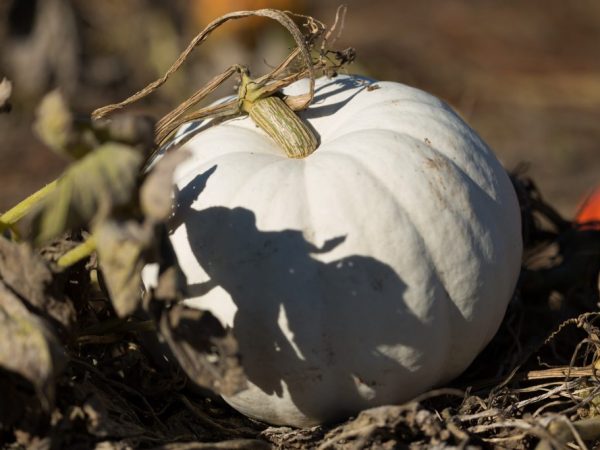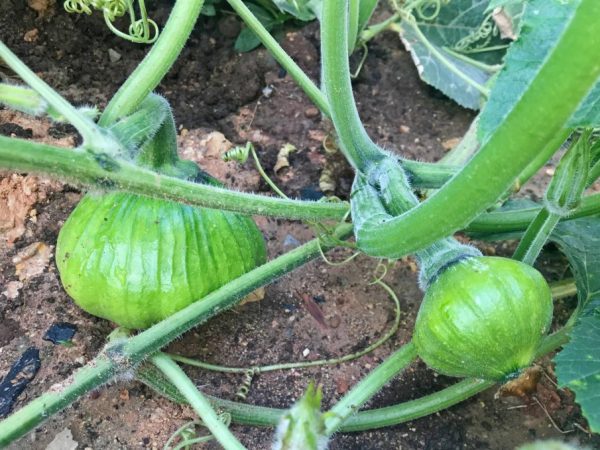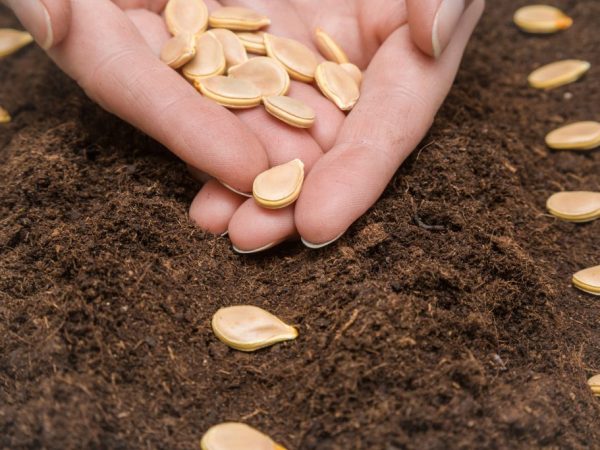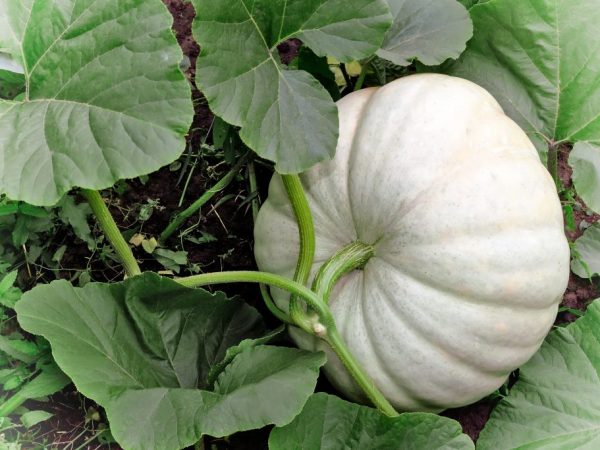Benefits of the pumpkin variety Winter Sweet
Pumpkin Winter Sweet was bred in 1995 in the Kuban (in one of the experimental stations of the Research Institute of Plant Growing).

Benefits of the pumpkin variety Winter Sweet
The variety is large-fruited, late-ripening, characterized by high sugar content and good keeping quality. It is unpretentious to the soil, tolerates drought and cold well. This allowed him to quickly gain popularity, especially in the northern regions.
Features of the variety Winter Sweet
Winter sweet pumpkin was bred specifically for the arid regions of the North Caucasus and the Lower Volga region. But at the same time, breeders also managed to get a culture that tolerates cold well. It can be planted in the middle Strip, Moscow region, even in Siberia and the Urals.
She is unpretentious to soil. If other types of pumpkin do not grow well on clay and sandy loam soil, then this one takes root well.
If fertilized correctly, even on soils with low fertility, you can achieve high yields. At the same time, nitrates will not accumulate in the fruits - this is another feature.
The advantage of pumpkin is its resistance to anthracosis and high resistance to powdery mildew.
Description of the variety
The variety belongs to large-fruited. Pumpkins have a weight of 6 kg to 12 kg. From one meter of the bed, you can collect 25-30 kg of products. Its inner part is hard, but very sweet, which distinguishes the vegetable from table or universal varieties.
There is a lot of juice in the pulp, it can be squeezed out and canned. The skin is dense, so pumpkins are stored even until mid-spring.
This is a late-ripening variety, the growing season is 130-140 days. The crop can be harvested at the end of September.
Description of the external signs of the Winter Sweet Pumpkin:
- Medium climbing bush.
- The leaves are large, dark green, pentagonal, with weakly expressed notches.
- The stems are thick, fleshy.
- The pumpkin is round, strongly flattened on both sides.
- Ribs and lobules well defined.
- There are warts and bumps on the surface.
- The peel is gray, with blurred light and dark spots. Unripe fruits are dark green.
- The thickness of the skin is small; it has a greenish tint in the cut.
- The middle is compacted, thick, orange or egg-yellow, juicy.
- The color of the seed nest is orange. Each seed is attached to it by three placentas of an open structure and a loose structure.
- Seeds are oval or almost round, yellow in color, not very large. The skin on them is smooth, hard, like a shell. Weight 1000 pieces - 350-400 g.
The pumpkin is very aromatic. It contains a lot of sugar, so it is classified as a sweet variety. The amount of carotene, other vitamins and minerals is standard. Caloric content, despite the sugar content, is low. The vegetable is considered dietary and is recommended for people who want to lose weight.
Growing varieties

Fertilizers will increase the productivity of plants
According to the description, the Winter Sweet Gourd variety is considered cold-hardy. But in general, these are thermophilic crops, they should be planted in bright areas, on the south side.
The best predecessors: potatoes, carrots, cabbage, legumes (peas, beans, clover), tomatoes, onions, garlic. Re-planting after 5-6 years.
This variety is not very demanding on the soil. But for a good harvest, fertilizers should be applied. If there is clay soil in the garden, it needs to be made lighter. For this, peat or peat-based compost is introduced. Sandy soils are improved by introducing chernozem, humus.
The culture loves neutral or slightly alkaline soils, their acidity is regulated by calcium. Depending on the pH level, add from 200 to 600 g of lime or dolomite flour per meter of the bed. It is also necessary to fertilize the ground.
Top dressing
- Phosphate - 20 g / m²
- Nitrogen - 30 g / m²
- Organic - 7 kg / m²
One half of the dose is used in the fall, the other in the spring, a few weeks before planting. Only in well-prepared soil will the variety demonstrate its high yield.
Preparing for landing
The pumpkin can be planted in two ways - for seedlings and seeds directly in the garden. Since the variety is late maturing, it is recommended to use seedlings in the northern regions. They begin to grow in early April or late March.
Pre-prepare small peat, cardboard or plastic pots, with a volume of about 150-200 ml. Fill them with standard vegetable or cucumber soil. A teaspoon of nitrophoska is added to 1 kg of soil.
Before planting, the seeds are treated with a weak solution of potassium permanganate, 0.02% zinc sulfate or special fungicides for the prevention of fungal diseases. Then for 2-3 days it is poured with warm water for swelling.
You can add a growth stimulant or regular ash to the container. They plant one seed in a pot, to a depth of 1.5-2 cm. All containers are placed in a box, covered with foil.
How to plant
Seedlings are recommended to be grown on the southern windowsill. When the first shoots appear (7-14 days after planting), the film is removed.
After a week, the plants are fed with nitrophos (5 g / 10 l of water). The sprouts are transferred to the garden bed when they stretch 15-20 cm in length, and 4-5 true leaves appear on the stem. Planting rules in the garden are the same as for seeds.

Seeds are planted in warm soil
Seedlings or seeds are planted in open soil when the ground warms up to 10-12⁰С.
For one winter pumpkin, you will need an area of 80 × 80 cm or 100 × 100 cm, since the variety is large.
They pull out a hole 5 cm deep and 4 cm in diameter. Carefully put 2 bushes of seedlings or 4-5 seeds there. Fall asleep with soil and add.
If the soil is heavy, loamy, it is better to plant the pumpkin in ridges 5-6 cm high. After the seeds emerge, they look closely at the bushes. Weak ones are removed, no more than 2 plants should remain in the hole.
Care
Growing Winter Sweet Gourd involves the basic care measures described below.
Weeding
The first weeding is carried out when the plant has 4-5 true leaves or a week after planting the seedlings. Weeds are removed from the aisles and next to bushes. Around the same time, you need to loosen the soil. In the aisles, the soil is loosened before watering, and next to the roots - after it.
During the season, it is necessary to weed 4-5 times and loosen the ground 2-3 times until the leaves completely cover the site.
Watering
Water the bushes as the soil dries up, with water at room temperature. The first fertilizers are applied 20 days after planting, and then every 2 weeks until the fruits are set.
Fertilizer
For feeding use:
- Nitrofosku (10 g per plant for the first time and 15 g later)
- Ash (1 glass under a bush)
- Mullein 1: 8 with water, slurry 1: 4 or chicken droppings 1:10 (bucket for 6 bushes)
- Complex mineral fertilizers for vegetables (40-50 g / 10 l of water)
Hilling
It is necessary to spud the bushes before the flowers appear. Pinch the tops slightly so that they do not curl too much. It is imperative to check how many fruits are set on one branch.
For pumpkins to grow large, there should be no more than 3 of them. Weak and crayons are neatly cut off.
When the fruits grow, it is recommended to put plywood or dry straw under them to prevent rotting.
Tips & Tricks

Pumpkin stays healthy for up to four months
It is better to buy Winter Sweet Pumpkin seeds in specialized stores. In markets and street stalls, it is easy to fall for a fake and buy a completely different variety.
It is not recommended to store seed for more than a year, its germination rate drops sharply. If zucchini or other varieties grow next to the pumpkin, it is better not to leave the seeds for propagation. These crops interbreed and lose their varietal qualities.
A winter pumpkin of medium climbing, but it is also recommended to plant it next to a fence or net. The fence will not only serve as a support, but also protect the plant from the wind. If late frosts are planned, and the seeds have already sprouted, it is better to cover them with foil or straw. When the fruits are tied, watering is advised to sharply reduce, otherwise they will rot.
Harvest when the peel turns dark gray, without green blotches, and the stalk is dry. If you are cultivating for the first time, read the description of ripe pumpkins carefully. After harvesting, the fruits are folded for 2-3 weeks under a canopy that is well warmed by the sun. Then they are taken out to the storage, where the temperature is maintained at 8-14⁰С. The variety tolerates freezing well. To do this, the pumpkins are peeled and cut into cubes from 3 × 3 to 5 × 5 cm or tinder on a coarse grater.
The pumpkin can be stored for about a year. But after 3-4 months it loses its beneficial properties. The amount of sugar decreases and the level of carotene drops by 80%. Therefore, it is recommended to eat the fruits in the first 2-3 months after harvest.
This is a very juicy variety. You can squeeze juices out of it, make liquid baby purees. It is best to use fresh fruits before they have lost their liquid. Since the product contains a lot of glucose, people with diabetes should eat it with caution.
Reviews of gardeners about this variety
Winter Sweet variety is relatively young, many farmers have been growing it for years and leave positive reviews. First of all, a pleasant sweet taste is noted. The pulp is juicy and sugary, it makes very tasty porridge. After freezing, it does not lose its taste.
The second nuance that gardeners like is the high yield of the vegetable. In a small garden bed, you can grow several quintals.
The pumpkin is eaten with pleasure by animals - chickens, rabbits, goats and even cows. Therefore, it will be a useful and inexpensive addition to pet food. Milk and eggs will increase the vitamin A content.
Many are grown for sale: the pumpkin keeps well, so yellow fruits can be sold in the winter when they are more expensive.
It is resistant to diseases, there are practically no losses due to anthracosis or powdery mildew, which makes cultivation even more profitable. Many say they get their crops even on poor soils where other varieties are reluctant to grow.
disadvantages
According to gardeners from the northern regions, in a rainy summer, sweet pumpkin does not gain its declared sugar content. Especially when it is planted immediately with seeds in the garden.
The species is late ripening, begins to ripen in the fall, when the sun is already low. In the middle lane, it is better to plant from seedlings in order to shift the ripening time to late August or early September.

